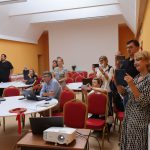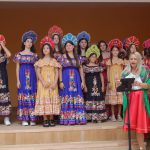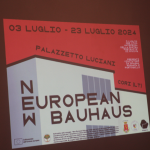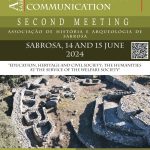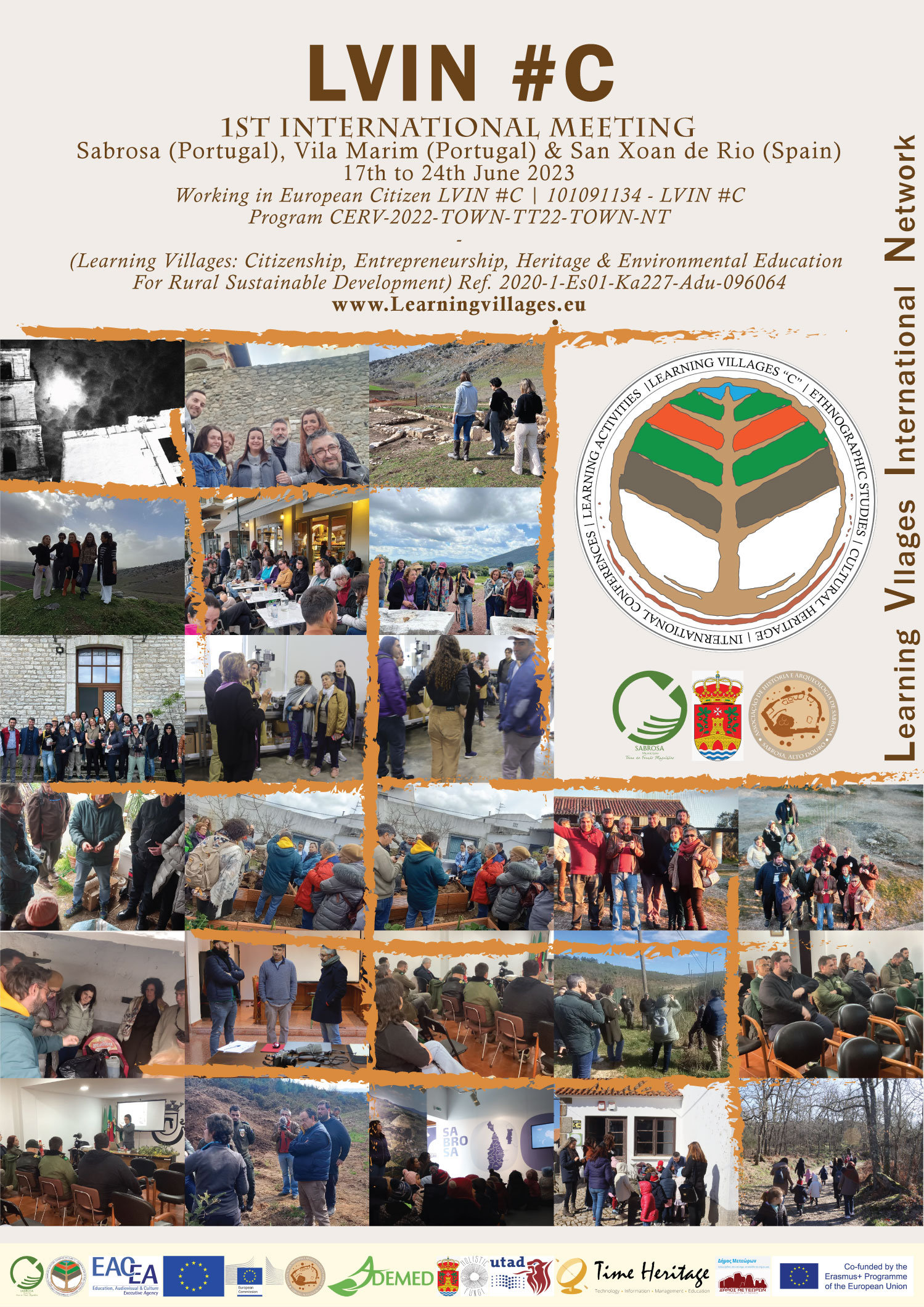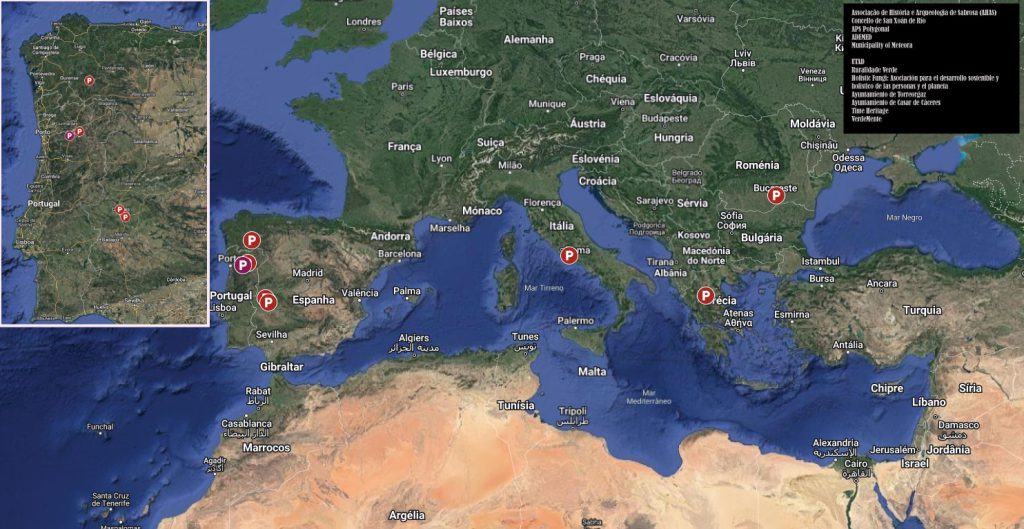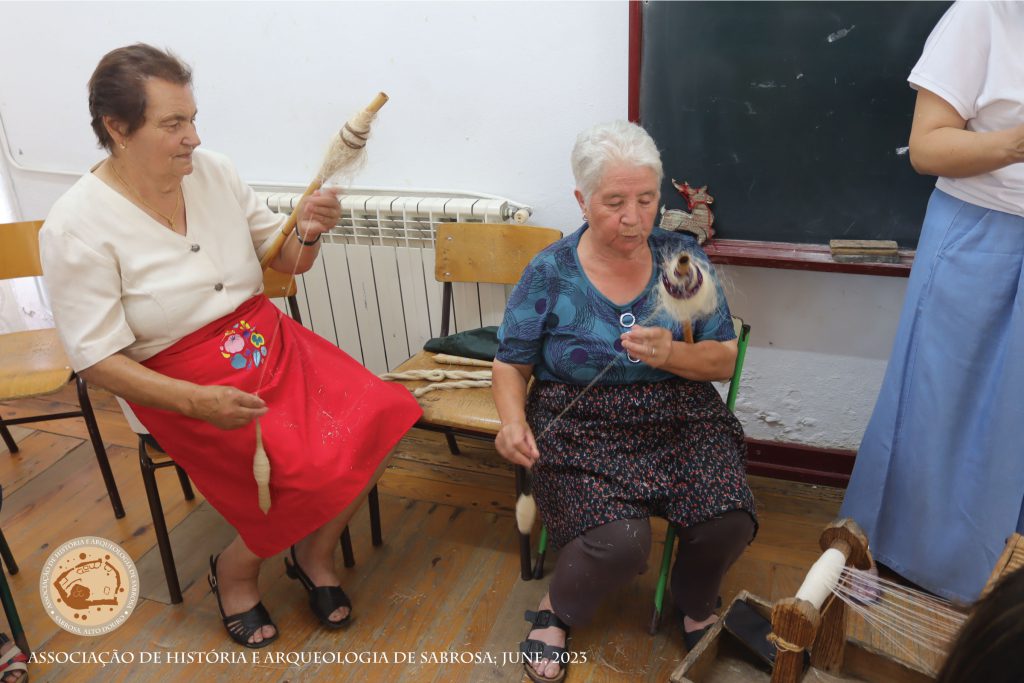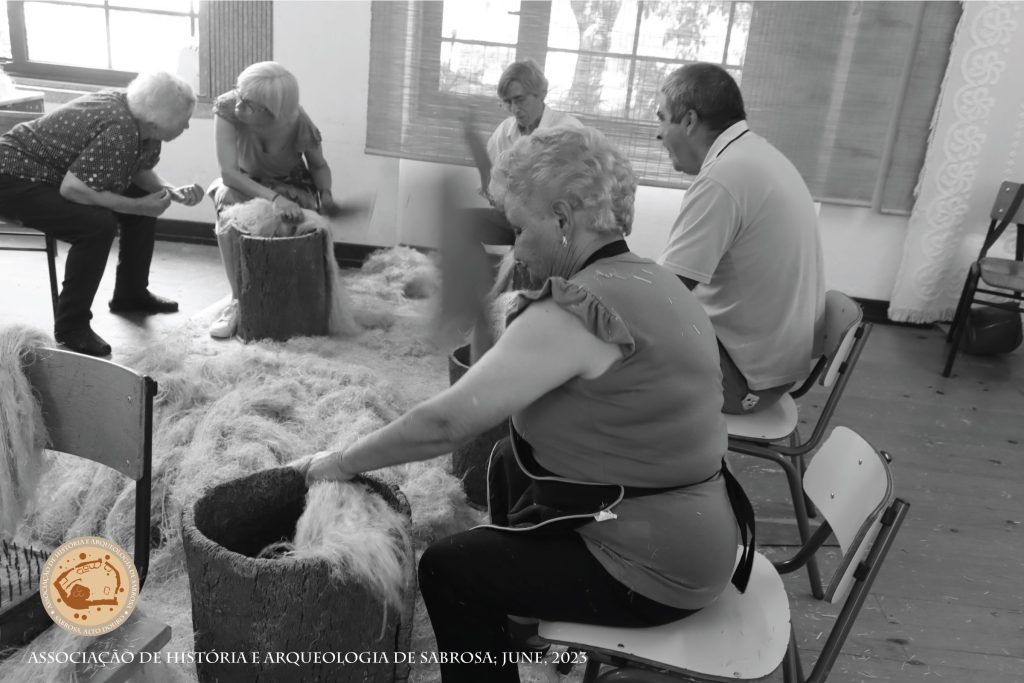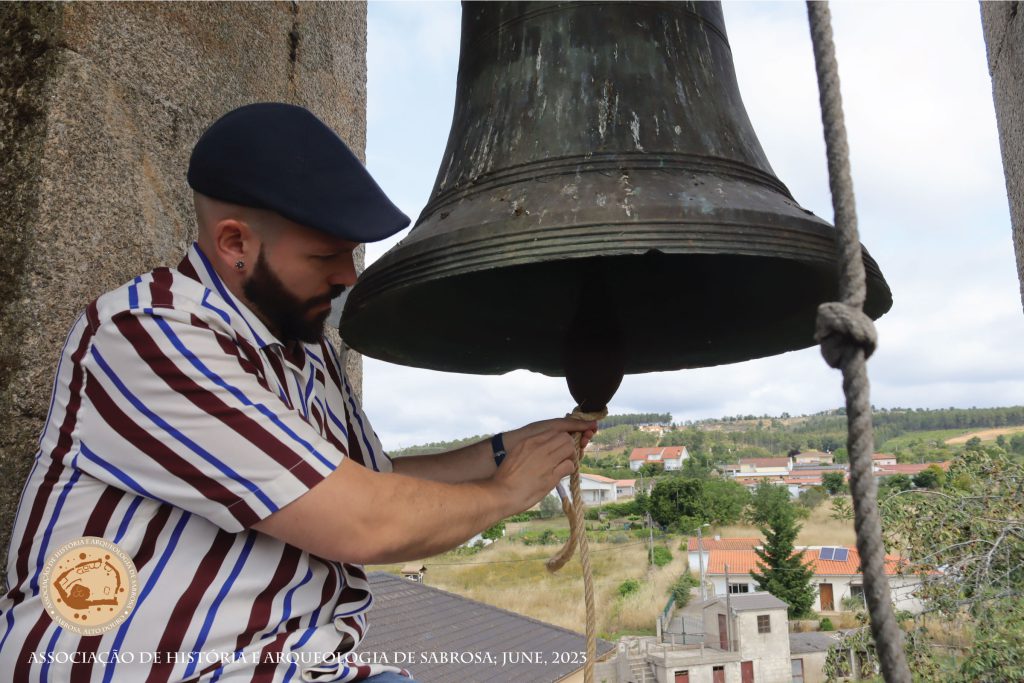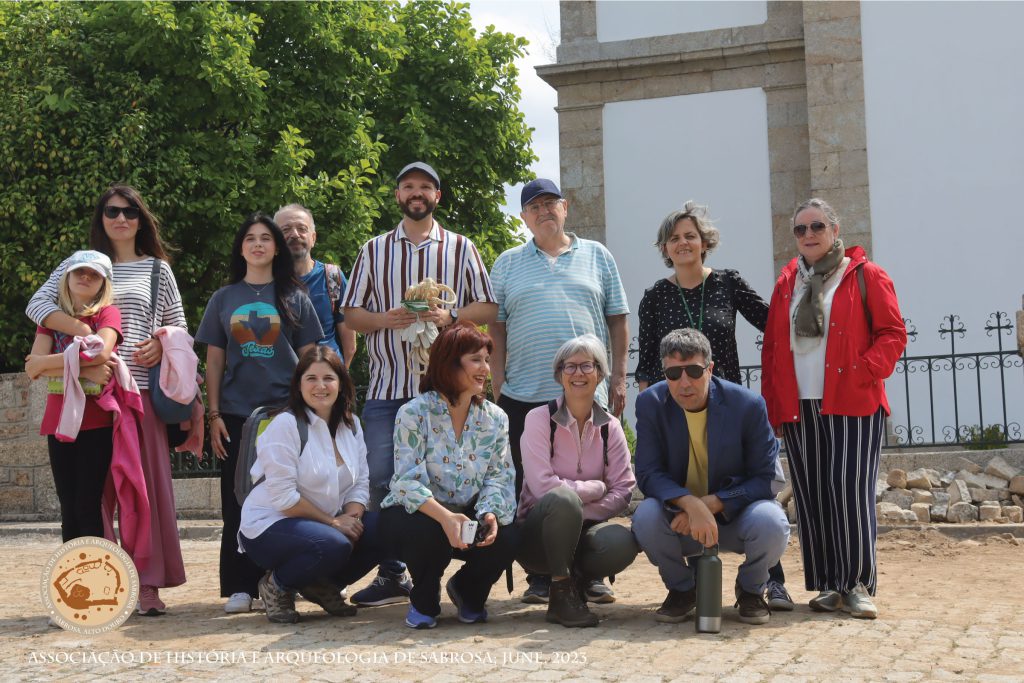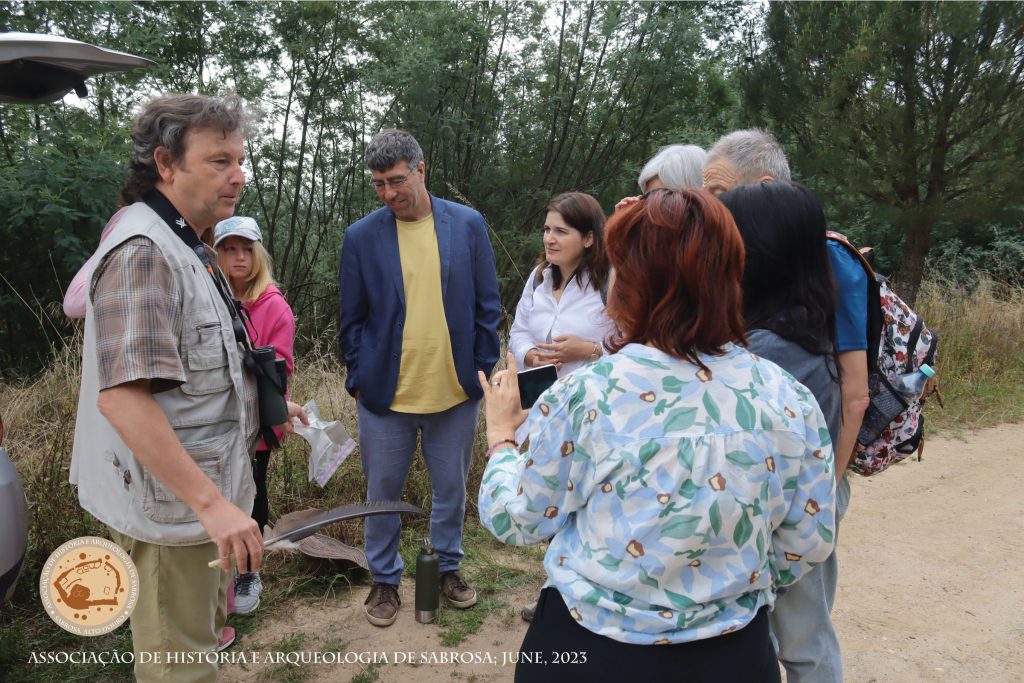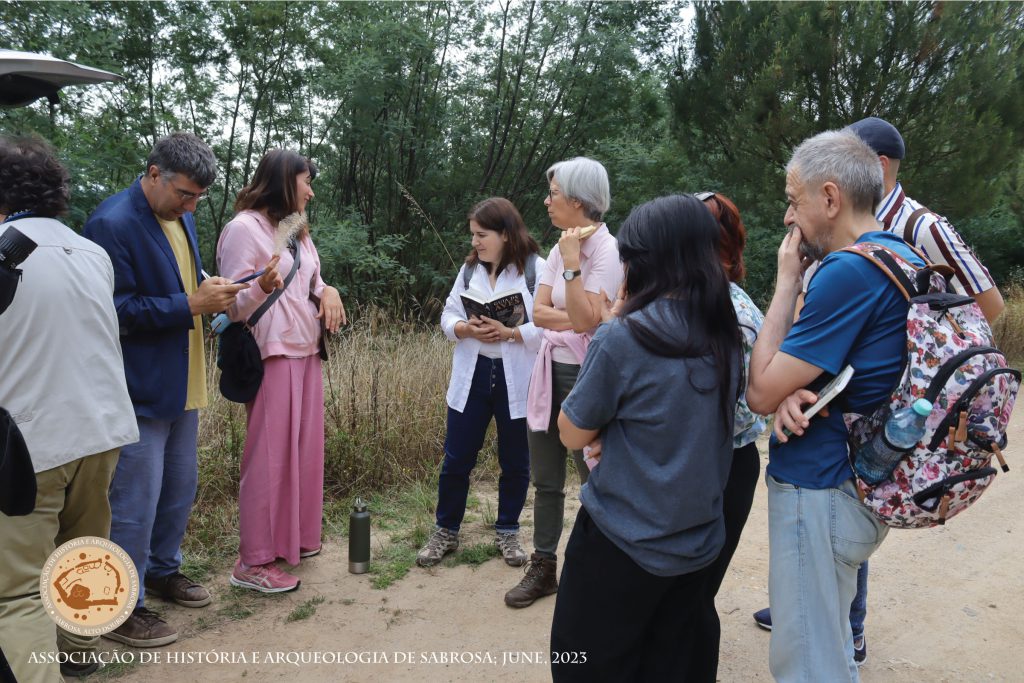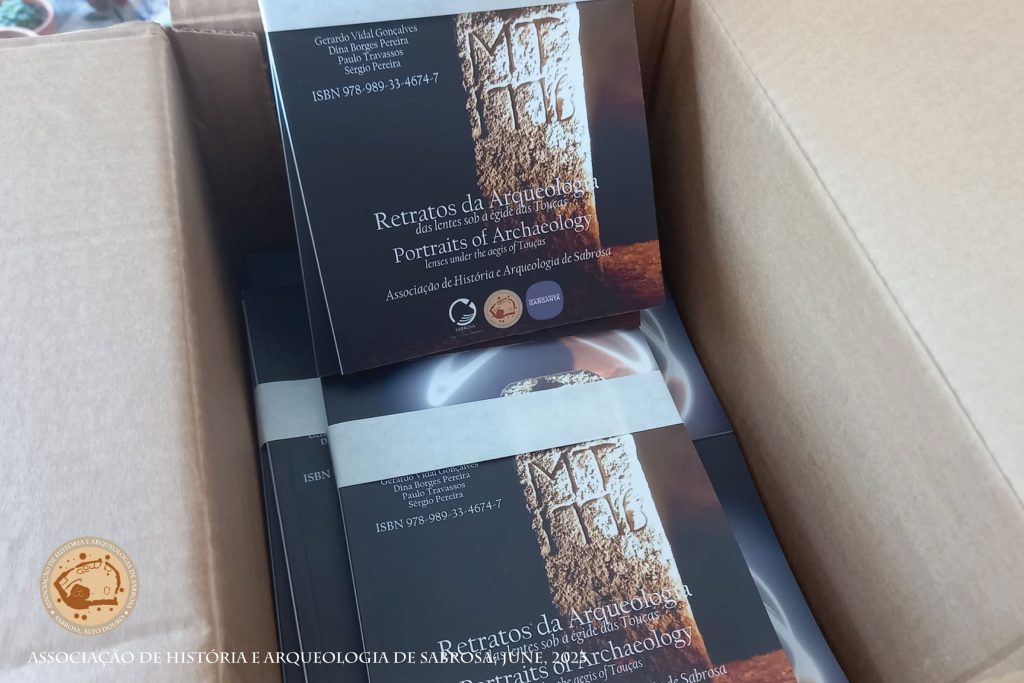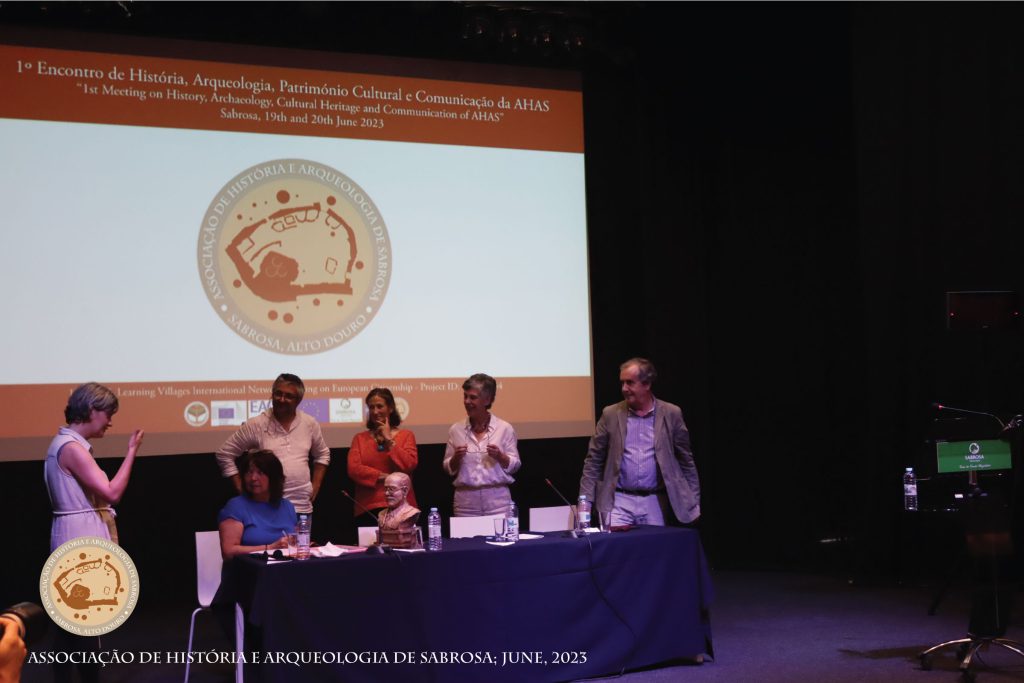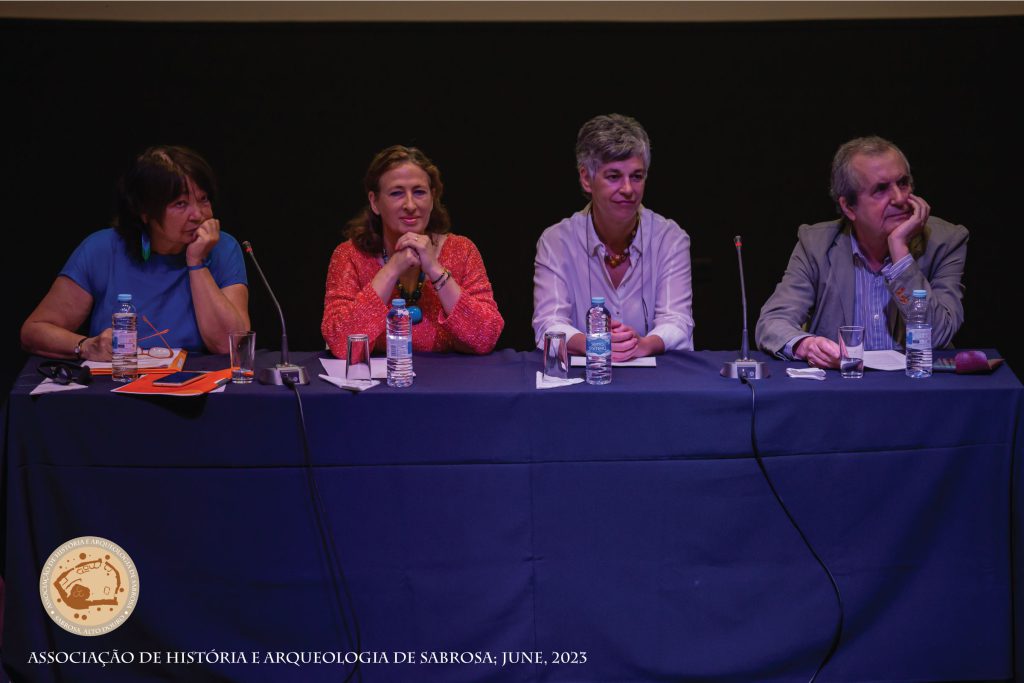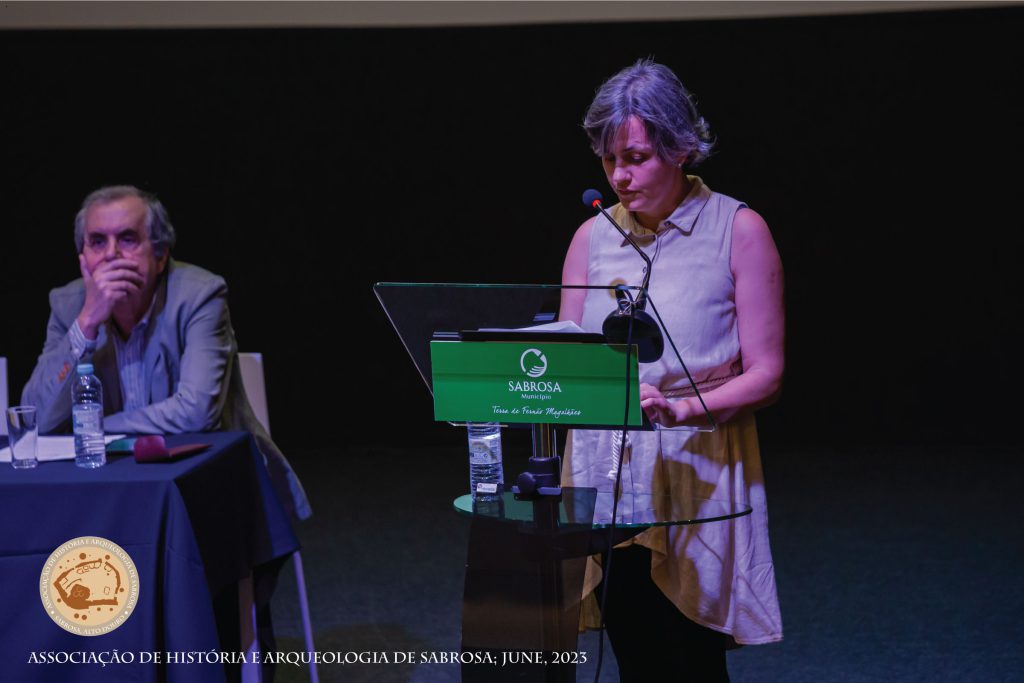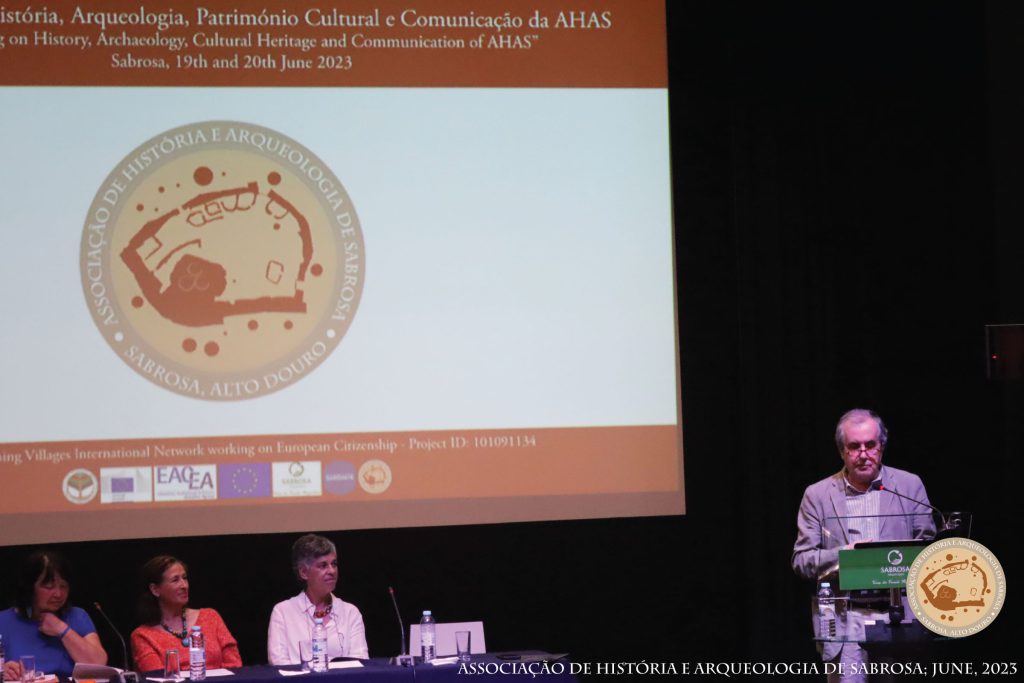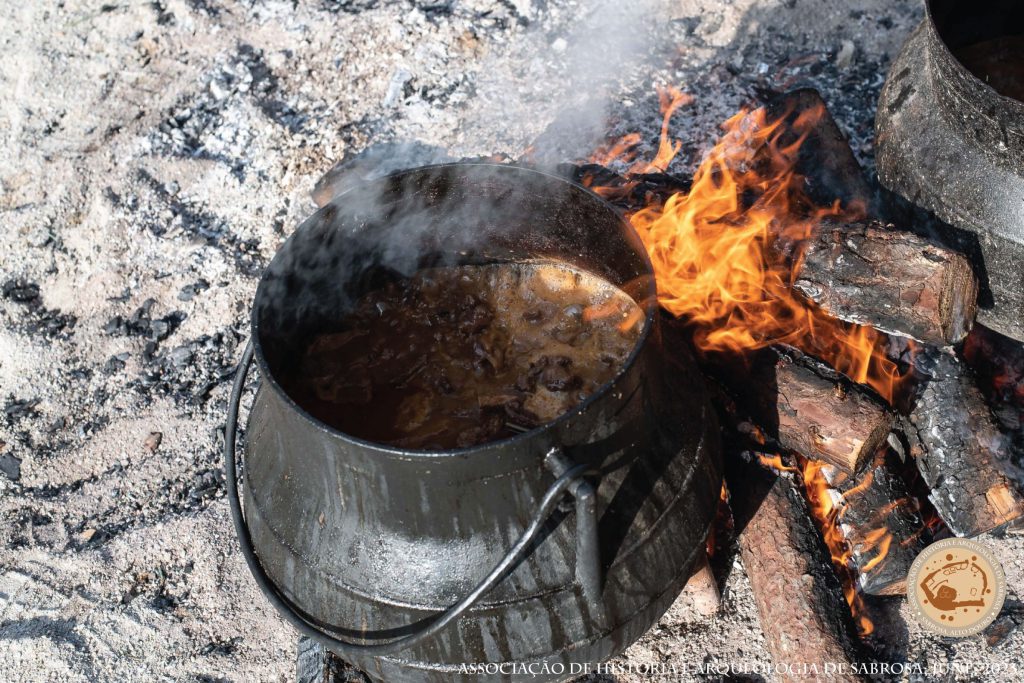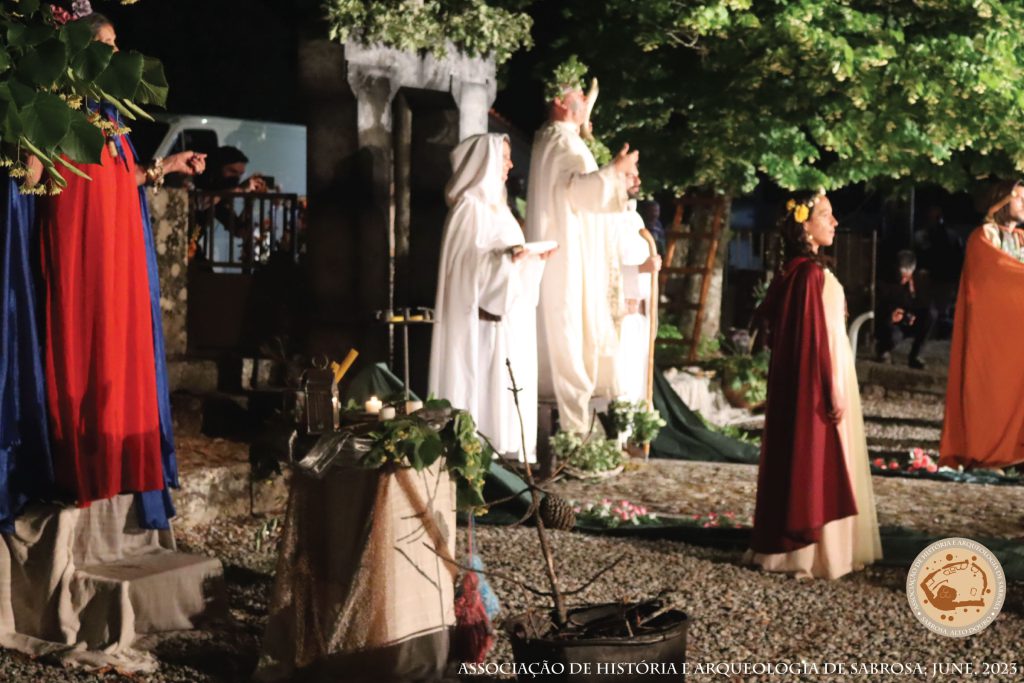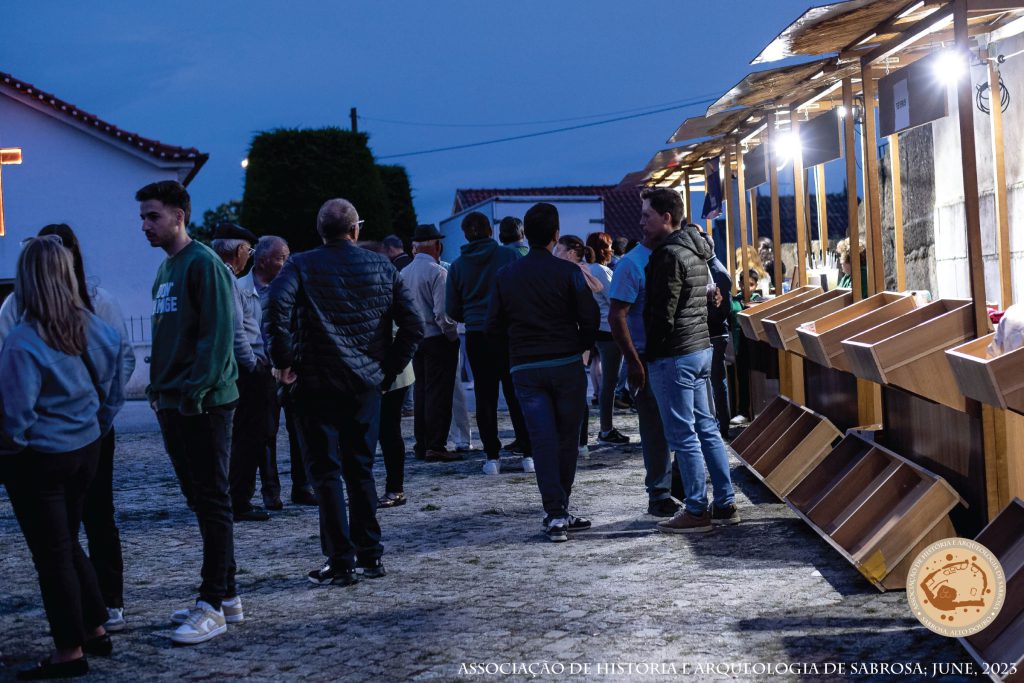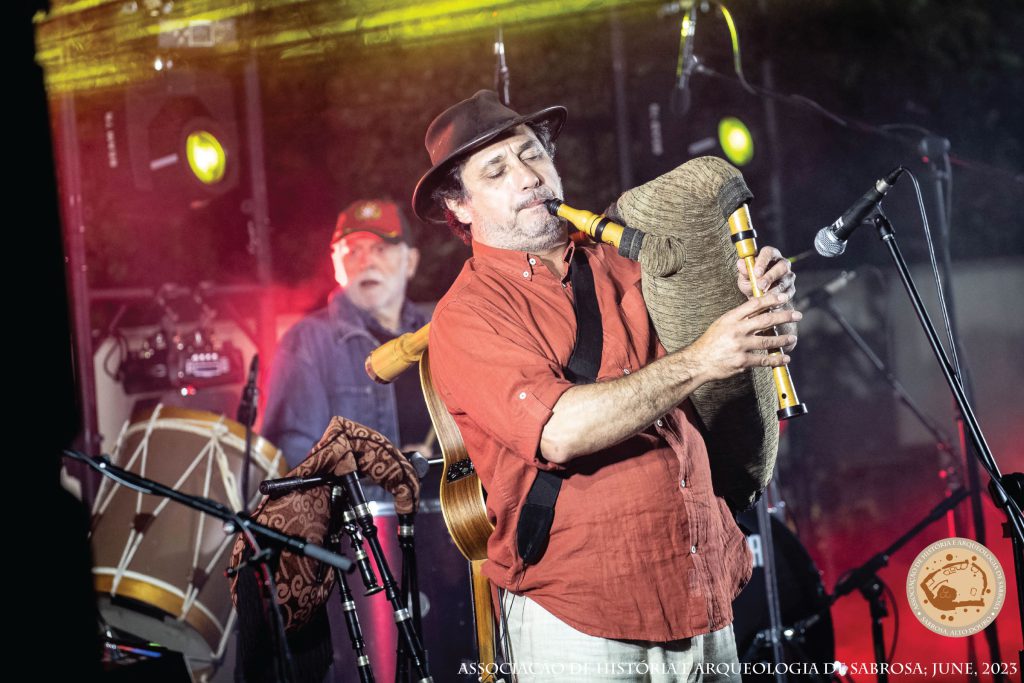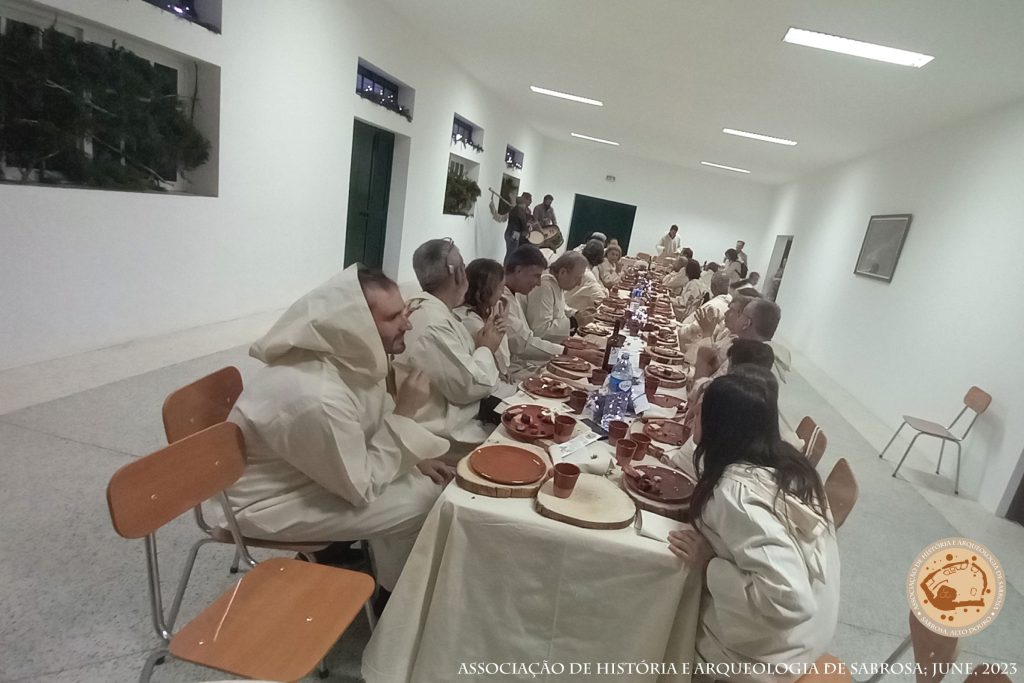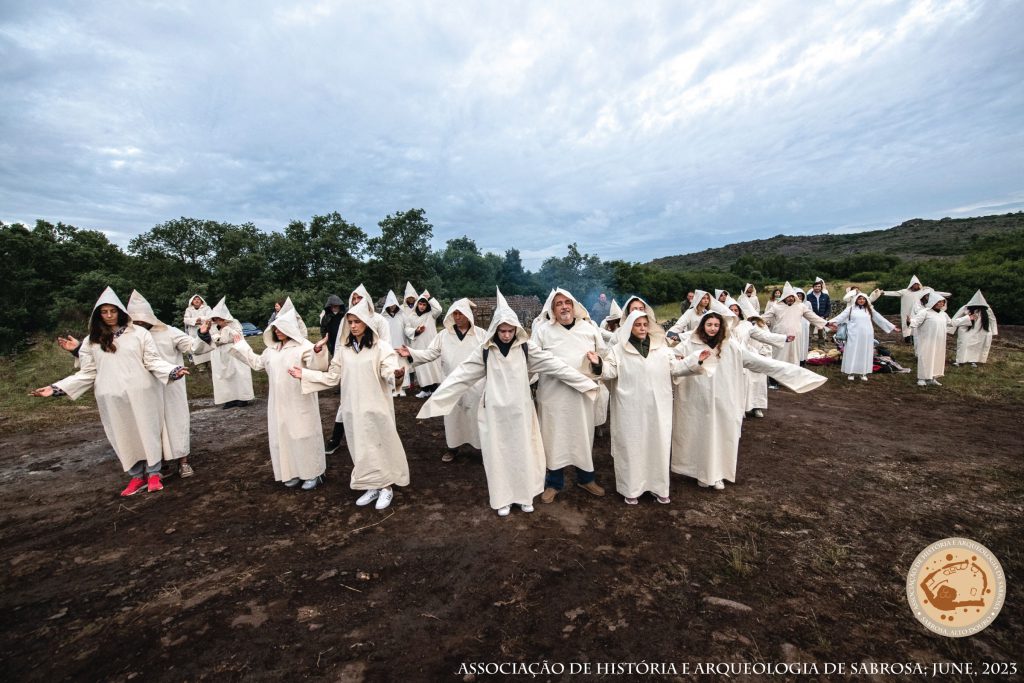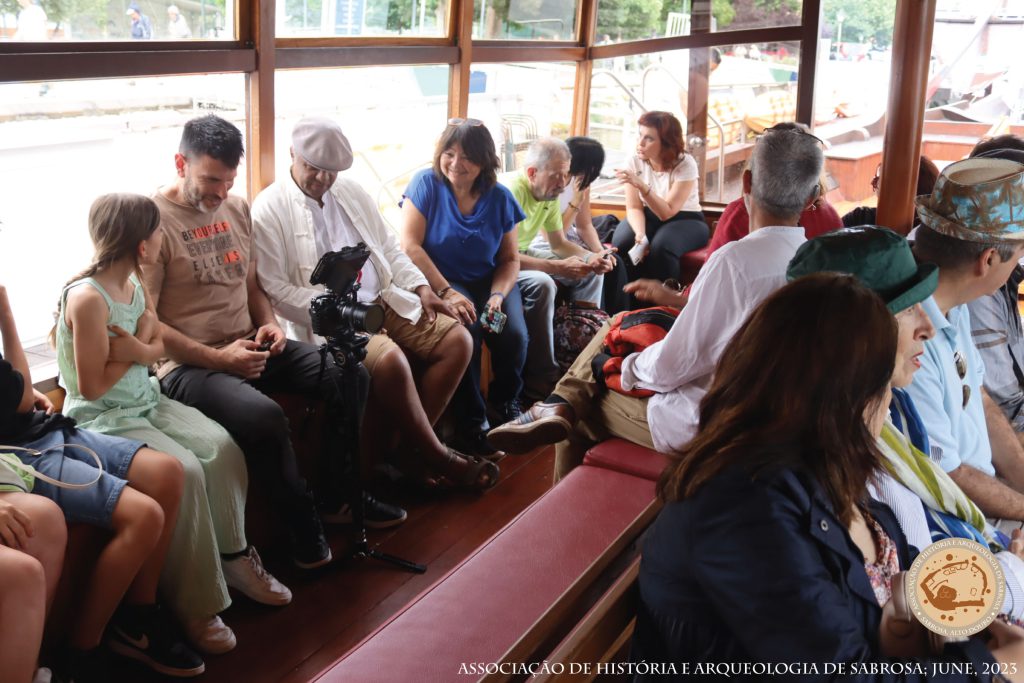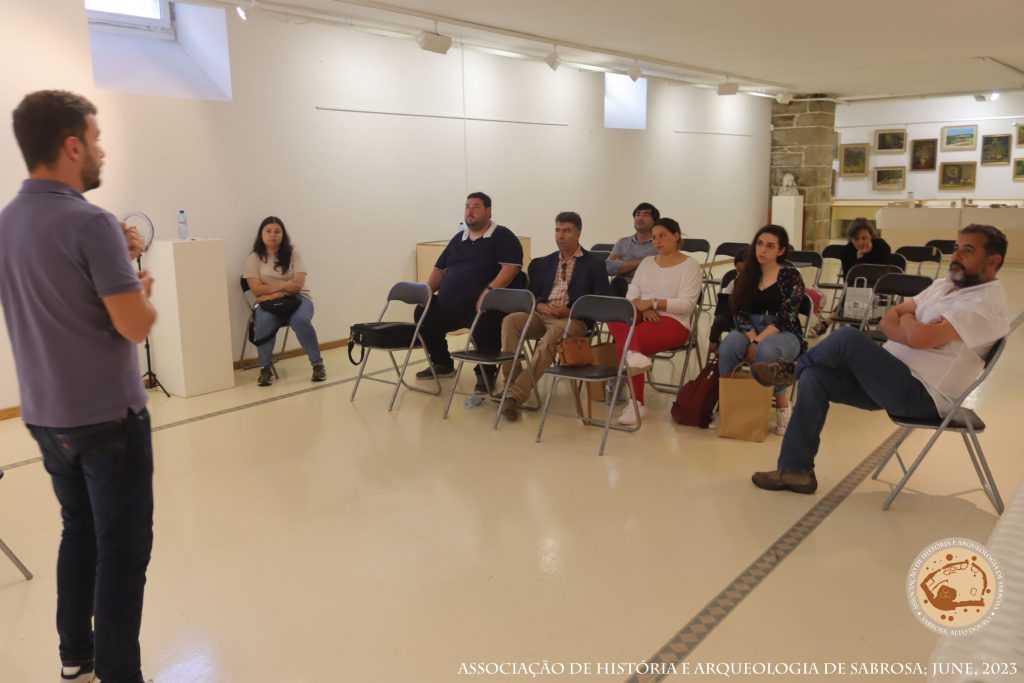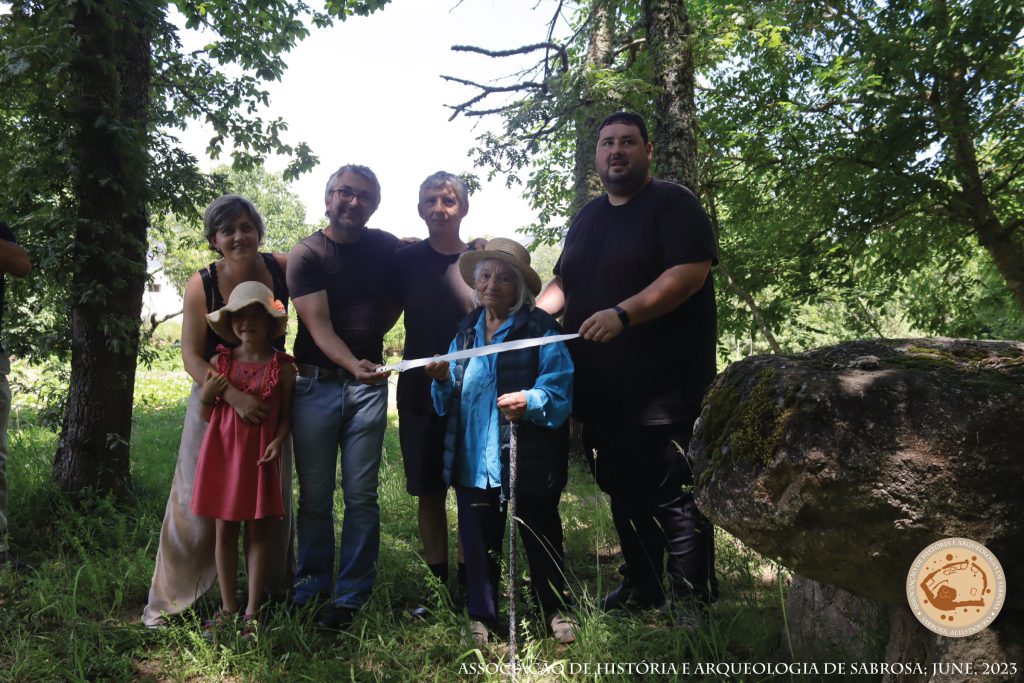The 1st International Week of the LVIN Project #C Learning Villages International Network Working on European Citizenship, Project No. 101091134, of the CERV Programme “Citizens, Equality, Rights and Values”, a programme that aims to protect and promote the rights and values enshrined in the EU Treaties and the Charter of Fundamental Rights, namely by providing support to civil society organisations at local, regional, national and transnational level.
The activities carried out, in the most varied areas and with the presence of the various partners, were conceived and programmed to fulfil the objectives and scope of the LVIN #C project and, naturally, the “Citizens, Equality, Rights and Values” programme.
The event took place between 17 and 24 June 2023, between the villages of Vila Marim (Vila Real, PT), Sabrosa, Aldeia da Garganta and S. Martinho de Anta (Sabrosa, PT), Pinhão (Alijó, PT) and San Xoan de Rio, the village of Mouruás, A Pobra de Trives and Manzaneda, in Galicia, Spain.
The event (International LVIN Week #C) took place in 9 villages or places of rural relevance, where various activities were developed, mainly aiming at sharing experiences, knowledge, contacts with local and rural populations, sharing experiences and community dynamics and learning sessions on culture, civic participation, discussion of rural problems and meetings on rural, historical, archaeological and environmental heritage, in a perspective of communication and transmission of knowledge. The participation was, indeed, relevant. The participation of the various partners that integrate the project should be highlighted (see Figure 1).
This week some of the activities integrated in the WP and deliverables proposed in the project were carried out. The “International meeting on history, archaeology, cultural heritage, communication, journalism and civil society” integrated in WP2, D 2.1 and the “International Conference Crisis Management in Rural Areas”, from WP3, D 3.1, among other activities and meetings, should be highlighted.
About the Activities carried out
Day #1 (17.06.2023) Vila Marim (Vila Real)
The international week started in the village of Vila Marim, in the municipality of Vila Real, a small village (see Figure 2) with a total area of 23.21 km² and a total population, in 2021, of 1517 inhabitants, with a population density of 65.4 inhabitants/km².
Among the most relevant activities, integrated in this day, we highlight: a) the Workshop “Ecosystem Services in the Veiga of Vila Marim, a workshop taught by Ana Sofia Santos, from the organization Ruralidade Verde (see Figure 3); b) the Workshop “Ideas and Strategies for a Linen Museum in Vila Marim” (see Figure 4); c) the “Workshop around the intangible cultural heritage (Carla de Sousa): Casa dos Baldios de Lamas de Ôlo; d) the “Workshop on the production of driving sticks for Maronesas cows: Mr. Agostinho Alves and Mr. Amâncio Peixoto; e) presentation on “Maronesas cows in agricultural work, “Jugo de Três”: Mr. Agostinho Alves. Visit to a “lameiro” with Maronesas cows: Mr Agostinho Alves.
Day #2 (18.06.2023) S. Martinho de Anta (Sabrosa)
The Village of S. Martinho de Anta (see Figure 6), a small village integrated in the Douro Demarcated Region, belongs to the Municipality of Sabrosa, and is part of the Parish Union of S. Martinho de Anta and Paradela de Guiães. The Parish of S. Martinho de Anta has an area of 15.95 km² and a resident population of 910 inhabitants, with a population density of 57.1 inhabitants/km².
The village of S. Martinho de Anta is a small village situated at the foot of the Serra de Nossa Senhora da Azinheira, one of the vast mountain ranges that inspired the poet Miguel Torga, who called this cultural and environmental environment his “Marvellous Kingdom”.
The activities programmed for this second day of the international week of LVIN #C are part of actions to raise awareness of the problems of the rural world, heritage education and citizenship and civil society. Of particular relevance were the interventions on a) Community Maps, a workshop led by Professor Martin Gomez-Ullate, of the University of Extremadura, with the title “social cartography and community maps in rural areas | Workshop in Community Maps: a tool for rural heritage”: b) the workshop/workshop on “Civil Society, Democracy and Education for Citizenship”, presented by Jurist Andreia Coutinho Simões and c) the presentation by Eurico Morais, on the importance of new rural and sustainable projects in the fields of Oenology, with the communication “CRAVAZ – Ancestral sparkling wine | A perspective on enotourism”.
Still, on the 19th, a very important activity for the community of S. Martinho de Anta took place, the “Traditional and Manual Ringing of Bells”, an activity and workshop carried out by the Campaneros de Extremadura Group, with the participation of Jose Maria Benítez (see Figure 7), an active promoter of the manual ringing of bells from Extremadura (see Figure 8).
A Birdwatching workshop was also held on the Miguel Torga Trail, between S. Martinho de Anta and Sabrosa, on the rural path to the archaeological site of Castro de Sabrosa, under the theme “Nature as an anthropic and cultural heritage: birdwatching, wings and tails workshop”, a course and activity given by the ornithologist Paulo Travassos, from LEFT – UTAD.
The events held on this day were attended by a significant number of participants, whether in the workshop on hand-ringing or in the communications session in the scope of the International Week in Sabrosa.
It is also worth mentioning the inauguration of a photography exhibition “Portraits of Archaeology: lenses under the aegis of the Touças (see Figure 11) and the launch of the book within the exhibition named “Portraits of Archaeology: lenses under the aegis of the Touças” (see Figure 12). This initiative seeks to promote cultural heritage education in rural and depopulated areas, encouraging, through historical and archaeological science and performing arts, a very rich cultural heritage, in this specific case, the archaeological site of the Touças Medieval Necropolis, located about 500 metres north of the ancient medieval village of Garganta, in S. Martinho de Anta, Sabrosa.
Day #3 (19.06.2023) Sabrosa, Auditório Municipal
Sabrosa is a village in Northern Portugal, integrated in the Douro Demarcated Region, with an Urban Rehabilitation Area (see Figure 13) of about 150 hectares and between 550 and 610 houses or dwellings. The village has a medieval foundation, and some traces of medieval town planning can still be seen (blue area in Figure 13). The parish of Sabrosa, which is part of the municipality of the same name, has a total area of 8.68 km² and 1130 inhabitants (according to the 2021 census), and the population density is 130.2 inhabitants/km². The town and parish have a very important built cultural heritage, among which the following stand out: a) Casa Azeredo, a building from the end of the 16th century, and part of the early 17th century; b) the 17th century chapel (1615); c) Casa da Pereira, the building where Fernão de Magalhães was born; d) a granite milestone nr. 47; e) the Castro de Sabrosa or Moorish Castle; f) the Casa dos de Barros (House of the Seven Generals); g) the Solar dos Canavarro (Hotel); h) the Mother Church (with an 18th century gilded carved Main Altar) i) The Quinta da Capela, the Almeida House from the end of the 18th century and the end of the 19th century, with an interior chapel dedicated to Saint Mary and Romantic style (Founder House of the Sabrosa Voluntary Fire Brigade); j) The Quinta da Comba; k) The Town Hall Building and l) The São Roque Chapel.
As part of the LVIN #C project, the town of Sabrosa hosted the 1st Meeting on History, Archaeology, Cultural Heritage and Communication, programmed, organised and conceived by AHAS. It was a meeting of a scientific and cultural nature whose aim was to promote discussion, knowledge and the problems surrounding the issues related to the study, preservation, enhancement and communication of cultural heritage in rural and inland areas.
The AHAS also promoted, following the meeting, a session of homage to the French historian Marc Bloch, held on the morning of 19 June, which was attended by Dr. Suzette Bloch, granddaughter of the historian (see Figures 14 and 15).
Several specialists in cultural heritage, archaeology, communication, history and cultural education were invited for the 1st Meeting on History, Archaeology, Cultural Heritage and Communication, integrated in the International Week LVIN #C. Among the invited guests were Helena Lapa (Mayor of Sabrosa), Dina Borges Pereira (President of AHAS), Gerardo Vidal Gonçalves (CIDEHUS -UE & AHAS), Hermínia Vasconcelos Vilar (Rector of the University of Évora), Laura Castro (Director of DRCN), Filipe Themudo Barata (CIDEHUS – University of Évora), Suzette Bloch (F. A.P.), Jorge Lopez Quiroga (Universidad Autónoma de Madrid), Natália Figueira (Universidad Complutense de Madrid), Luis Raposo (Association of Portuguese Archaeologists), Ana Cardoso de Matos (CIDEHUS – University of Évora), Jorge Raposo (CAA & Al-Madan), Martin Gomez-Ullate (Universidad de Extremadura), José Marques (V Cent. da Primeira Viagem de Circum-Navegação), Paulo Reis Mourão (Universidade do Minho), Vitor Nogueira (Biblioteca Pública de Vila Real), Florin Alexandru (ADEMED; Romania), Gabriela Contesina Staicu (ADEMED; Romania), María Antónia García de León (Universidad Complutense de Madrid), Pilar Barrios Manzano (Universidad de Extremadura), F. Javier Barra Sanz (Universidad de Extremadura).
Although the meeting took place in Sabrosa, a small town in the interior of Portugal, the attendance was over 70 people. Added to this was the growing media interest before, during and after the event.
DAy #4 (20.06.2023) Sabrosa, Auditório Municipal de Sabrosa
The 1st Meeting on History, Archaeology, Cultural Heritage and Communication, integrated in the International Week LVIN #C, took place during the whole day of the 20th:
- Gerardo Vidal Gonçalves: Sobre Marc Bloch;
- Filipe Themudo Barata: Marc Bloch;
- Suzette Bloch: Si loin, si près. Un grand-père nommé Marc Bloch;
- Jorge Lopez Quiroga & Natália Figueira: Daños irreversibles al Patrimonio vs Gestión y Conservación: el monasterio rupestre de San Pedro de Rocas (Ribeira Sacra, Ourense);
- Gerardo Vidal Gonçalves & Dina Borges Pereira: História, Arqueologia, Património Cultural: estatísticas, reflexões e a história que se conta;
- Luis Raposo: Arqueologia, património cultural e museus: territórios de cidadania;
- Filipe Themudo Barata: A História e Marc Bloch: um território do exercício da cidadania;
- Ana Cardoso de Matos: O Património Industrial e Marc Bloch;
- Suzette Bloch: Archeologie et histoire familiale
- Jorge Raposo: Al-Madan e Al-Madan Online: duas faces de um projecto de comunicação em Arqueologia e Património;
- Martin Gomez-Ullate: Mapas de Comunidad Etnográficos. Una herramienta para la educación patrimonial;
- José Marques: Na Rota de Magalhães / Elcano: Novos lugares de encontro 500 anos depois;
- Paulo Reis Mourão: A visão de um economista sobre o património: uma homenagem;
- Vitor Nogueira: Viajar na Idade Média;
- Afroditi Kamara: Palimpsest religious buildings in the Mediterranean: “otherness” and heritage interpretation;
- Gabriela Contesina Staicu & Florin Alexandru: Un-conventional cultural interventions in rural area in Romania and Europe;
- María Antonia García de León: El Rurbanismo/Neorurbanismo: sobre la metamorfosis del campo español;
- Pilar Barrios Manzano & Francisco Javier Barra Sanz: Los Ministriles: Músicos portugueses en el Cáceres del Renacimiento;
- Sofia Silveira Saraiva: Foto C3: Fotoetnografía, Identidad y Sexualidad en las colecciones científicas de la USAL.
On the 20th, after the closing session of the 1st AHAS Meeting on History, Archaeology, Cultural Heritage and Communication, the celebration of the Summer Solstice and the Theme Dinner “On the Druid’s Path” took place in the village of Garganta, a small village integrated in the Parish Union of S. Martinho de Anta and Paradela de Guiães, with about 220 houses (see Figure 19), an initiative integrated in the valuation of the historical, archaeological and cultural heritage of rural and depopulated areas.
The Summer Solstice Festival is an AHAS initiative, integrated in the LVIN #C project, with the support of the Sabrosa Town Council. The event included a fair with regional products and local producers (see Figure 23), a very important part of traditional transmontana gastronomy such as “Comida no Pote” (see Figure 20), a communal theatre prepared by the Filandorra Theatre Company, with a show on the theme of “Summer Solstice, Rurality and Ancestral Traditions” (see Figure 21).
A thematic walk along the old Miguel Torga trail was also held, a rural valorisation project, implemented by Sabrosa Town Council, which took more than 50 participants to the archaeological site of the Medieval Necropolis of Touças (see Figure 22).
As part of the promotion of the activities of the LVIN #C project and the valorisation project of the Medieval Necropolis of Touças, a thematic, cultural and immersive dinner was held, under the theme “On the path of the Druid”, for the participants in the International Week of LVIN #C and for the associated partners and beneficiaries of the project and all the leaders of the participating Learning Villages (see Figure 25). The event took place in Aldeia da Garganta, with the continuation of the day at the Summer Solstice Fair, with cultural and traditional activities and traditional music of the region, through the traditional music group “Os Andarilhos” (see Figure 24).
Day #5 (21.06.2023) Aldeia da Garganta, Necrópole Medieval das Touças
The initiatives developed on 21 June (day of the Summer Solstice, the longest day of the year) integrate, in essence, activities and projects developed by AHAS in the course of the promotion and enhancement of cultural, historical and archaeological heritage in rural areas. The Midsummer Solstice Celebration in the Medieval Necropolis of Touças, an archaeological site located 500 metres north of the Medieval Village of Garganta, is one of the cultural and educational initiatives integrated in the project and which are part of one of the most important guidelines of the Learning Villages, the education for culture in rural and deserted environments.
The event began at 5:30 in the morning, with the performance of a play (“in the path of the druid”) of the theatre company “SOLO” and AHAS, which seeks, through performing arts and historical research, to enhance, promote and disseminate to the entire rural community, young people and other agents of the rural world, the cultural and environmental heritage of the region (see Figure 26).
More than 70 people participated in the event (“in the path of the Druid”), including project members, associated partners, young people from the municipality, people from other municipalities and neighbouring villages, and 53 extras and other visitors.
On that same day, after the theatre events and various activities, a visit was made to the traditional boats of the Douro River, the “Rebelo” Boats (see Figure 29), making known private initiatives for the appreciation and promotion of the natural heritage of the Douro River, the historical contexts of Port Wine, and the relationship between man, trade, agriculture, viticulture and the Douro River, a relationship that intensified after the creation of the Demarcated Douro Region, still during the years 1774 and 1776, and that still continues today.
A trip in a Rebelo boat across the Douro River from the village of Pinhão to Quinta da Romaneira, across the Douro River, with a 1h trip and explanations in English, Portuguese and French, adapted to the cultural and touristic criteria.
DAy #6 (22.06.2023) A Porba de Trives, Adega “A Gorga”
The International Meeting of the LVIN #C Project covered more than 508 Km and 9 villages and learning villages, 5 in Portugal (Vila Marim, S. Martinho de Anta, Garganta, Sabrosa, Pinhão) and 4 villages (A Pobra de Trives, Manzaneda, Aldeia de Mouruás and San Xoan de Rio) in Galicia, Spain (see Figure 30).
A Pobra de Trives” is a village and a municipality in Spain, in the province of Ourense, in the autonomous community of Galicia, with an area of 31.29 km² and a population of 2664 inhabitants in 2007, with a population density of 32.22 hab/km².
It was about 1.2 km from the village of A Pobra de Trives that a meeting and conviviality took place in the “Adega a Corga”, in Camiño Piñeiro, where several regional products and some presentations about regional projects were presented, with the participation of a) Lito Prado, from Amarelante Sociedade Cooperativa Galega; b) Adrian Hervella, from Embutidos Hervella; c) Lúcia Martinez, from Sabor da Serra; MEL and d) Marta Conde, from Conxenia (see Picture 31).
A cultural and environmental visit was also made to one of the oldest chestnut trees in the village of A Pobra de Trives, the Pumbariños chestnut tree (see Figure 32). The visit also included the realization of a multidimensional digital survey, carried out by AHAS, in the context of the digital humanities, with the result of a digital model, which will be given to municipal institutions and associations in the region (see Figure 33).
During the activities, a cultural visit was also made to the medieval village of Manzaneda, a village 3.8 km southeast of A Pobra de Trives”.
Day #7 (23.06.2023) A Porba de Trives, Santa Leonor
It was in the village of “A Pobra de Trives” that the second event of the LVIN #C international week was held on the 7th, the International Congress “Management crisis in the rural space: fires” (see Figure 34 and Figure 35).
This international event weaves the collaboration of several researchers, associations and political and institutional leaders, among which we can highlight a) Patricia Barja, Alcaldesa of A Porba de Trives; b) Xose Miguel Pérez, Alcalde of S. Xoan de Rio; c) Martin Gomez Ullate, from the University of Extremadura; d) Duarte Marques, from aguiarfloresta, with the speech “the role of the government in the fight against forest fires”; e) Eng. Ana Solares, with the intervention “fire prevention in fuel base”; f) David Rodriguês, with the intervention on the “approach to the work of professionals in the extinction of fire in Galicia”; g) Miguel Pardelhas, on the “experience of the environmental project Batefogo; h) Marco Ribeiro, with the “good practices in fire prevention”; i) Carlos Aguiar: and the “recovery of ploughed lands, the example of Life Maronesa.
June 23rd finished with the participation, already in San Xoan de Rio village, of the LVIN #C project team, in the traditional party of San Xoan de Rio village, an event that allowed, to all participants, to get in touch with the Galician traditional gastronomy, the popular and traditional music and the sharing of experiences, exchange of ideas and inter-regional conviviality.
Day #8 (24.06.2023) San Xoan de Rio, Ayuntamiento de San Xoan de Rio
San Xoan de Rio is a municipality in Spain, belonging to the province of Ourense, in the Autonomous Community of Galicia. It is a municipality with an area of 61.14 km² and a population of about 811 inhabitants, data from 2007, which gives the municipality a population density of 14.11 inhabitants/km².
On the last day of the international week of LVIN #C took place, in the main hall of the Ayuntamiento de S. Xoan de Rio, the presentation of the work of Miguel Garcia Fernandez “from old papers to digital humanities: the history (to be done)”, a vision and a fantastic work about the importance of History, of the digital Humanities and of the investigation of archives and documents for the understanding of the evolution of the old rural villages of the present desertified territories and of the interior (see Figure 36).
A visit was also made to the village of Mouruás (Ruta da Fraga, Mouruás: the Sword of Mouruás), a small village south of San Xoan de Rio, where, still during the 1960’s, an important archaeological artefact, a bronze sword, a sword of the Bronze Age, about 3000 years old, had been discovered during the construction works of a road. This sword was recovered by Mrs. Nesita, resident in the Village of Mouruás, still in the 1960s. Today the sword is deposited in the Museo de Arqueología de Ourense.
In an attempt to bring the historical legacy closer to its people, the AHAS carried out the multidimensional scanning of the Sword of Mouruás, with the collaboration of the Museo de Arqueología de Ourense and the Alcaide del Ayuntamiento de S. Xoan de Rio, and, following the digital archaeology projects, the first 3D printing of the fantastic sword of Mouruás was carried out and delivered, the replica, to Mrs Nesita, exactly on the site where the sword is said to have appeared. It was an exciting and culturally interesting initiative (see Figure 37).
It was with this initiative and the end-of-event lunch at Adeia de San Xoan de Rio that the activities of the LVIN International Week #C came to an end.
Appreciations and observations
The international week of the LVIN #C project took place between Portugal and Spain, between the villages of Vila Marim, S. Martinho de Anta, Garganta, Sabrosa, Pinhão, in Portugal, and A Pobra de Trives, Manzaneda, Aldeia de Mouruás and San Xoan de Rio, in Galicia, Spain. More than 510 km were covered and more than 17 activities, events, meetings and gatherings took place.
The various activities carried out made it possible to exchange knowledge, experiences and observations about the rural world and some of the dynamics, in this case Iberian, of approach to the problems of desertification, education for culture, the environment, the fire crisis, good practices in the valuation of the territory and interesting discussions about the problems of the interior.
Essentially, 7 villages or parishes were visited with little expressive areas (see Figure 38) and with a low population density (see Figure 39), where the number of inhabitants, in general, does not exceed the average of 1220 inhabitants/km² (see Figure 40).
The activities carried out, the contact with the populations, the political leaders and some of the most relevant institutions in each of the territories allowed, in part, to map a set of realities and visions about the problems of the interior and the existing possibilities in order to improve the relations between communities, the cultural and educational dynamics, citizenship and education for culture and democracy.
Outlook and results
The activities carried out will result in the outputs determined within the project and its WP. However, a working meeting will be held in order to enable the elaboration of new outputs or adaptations of the ones already defined, taking into account the discussions, preliminary results and the evaluations of each of the activities carried out and their contexts.
Project Beneficiaries:
Associação de História e Arqueologia de Sabrosa (AHAS)
Concello de San Xoán de Río
APS Polygonal
ADEMED
Municipality of Meteora (sem intervenção/presença no encontro)
Associated Partners
UTAD
Ruralidade Verde
Holistic Fungi: Asociación para el desarrollo sostenible y holístico de las personas y el planeta
Ayuntamiento de Torreorgaz
Ayuntamiento de Casar de Cáceres
Time Heritage
VerdeMente


